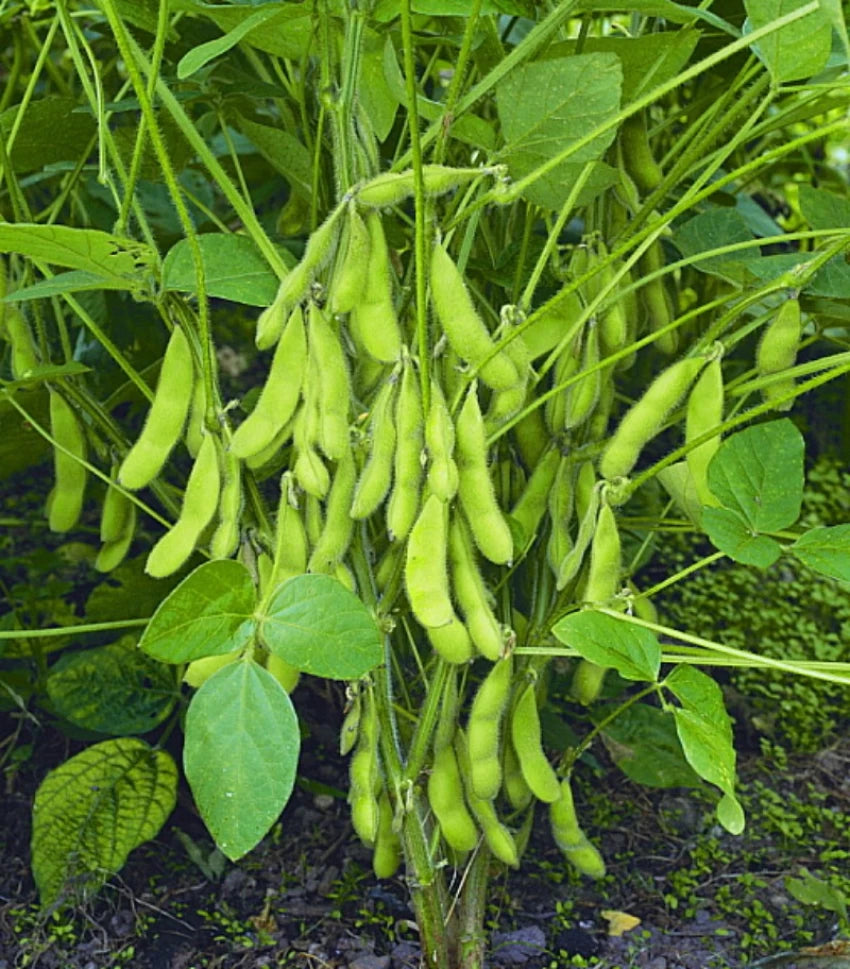
Disease management in soyabean
Share
Introduction
There are a few diseases that can affect soybeans, but there are also a few things that can be done to manage them.

Here are some of the most common soybean diseases and how to control them:
Seedling diseases: These diseases can kill seedlings before they emerge from the soil or shortly after. They are most common in cool, wet soils. Planting soybeans into warm (> 60°F), well-drained soils and using fungicide seed treatments can help to reduce seedling diseases.
Foliar diseases: These diseases can infect the leaves, stems, and pods of soybean plants. They are most common during warm, humid weather. Planting soybean varieties with resistance to foliar diseases and scouting fields regularly to identify diseases early are important steps in managing foliar diseases. Fungicides can also be used to control foliar diseases, but they should only be used as a last resort.
Soilborne diseases: These diseases live in the soil and can infect soybean plants at any stage of growth. Crop rotation is one of the best ways to manage soilborne diseases. Planting soybeans in a field that has not recently been planted to soybeans can help to reduce the risk of soilborne diseases.
Here are some additional tips for managing soybean diseases:
Keep fields clean and free of debris. Debris can provide a harbor for pathogens.
Manage irrigation carefully. Overwatering can stress soybean plants and make them more susceptible to disease.
Test soil regularly for nematodes. Nematodes are tiny worms that can damage soybean roots and make plants more susceptible to disease.
Stay informed about the latest soybean diseases. New diseases are emerging all the time, so it is important to stay up-to-date on the latest threats.
Charcoal rot, ashy or stem blight or dry root rot: Macrophomina phaseolina
Symptom:
This disease occurs when the plants are under moisture stress or under nematode attack or through soil compaction or may be through nutrient deficiencies.
It is a most common basal stem and root disease of the soybean plant.
Lower leaves become chlorotic and wilting and drying is apparent.
The diseased tissues generally develop grayish discolouration.
The sclerotia look like black powdery mass hence the disease is known as charcoal rot.
Blacking and cracking of roots is the most common symptom.
The fungus survives in soil and crop debris in dry conditions.
Dry conditions, relatively low soil moisture and nutrient and temperature ranging from 25o C to 35o C are favourable for the disease.

Management:
Deep ploughing in summer.
Ensure balanced fertilization of the crop.
Rotate soybean with cereals.
Maintain well drained field
Destroy last years infected stubble.
Seed treatment with T. viride @4g/kg or P. fluorescens @ 10g/ kg of seed

Spot drenching with Carbendazim 1g/lit or P. fluorescens / T. viride 2.5 kg/ha with 50 kg FYM

Summary
Soybean diseases can significantly reduce yield, but luckily there are preventative measures to take. Planting in warm, well-drained soil and using resistant varieties help combat seedling and foliar diseases. Crop rotation disrupts the life cycle of soilborne pathogens. Additionally, keeping fields clean, managing irrigation, and testing for nematodes further minimize disease threats. For specific issues like charcoal rot, deep plowing, balanced fertilization, and fungicide seed treatments are effective. By following these practices, soybean farmers can optimize their crops' health and harvest.
